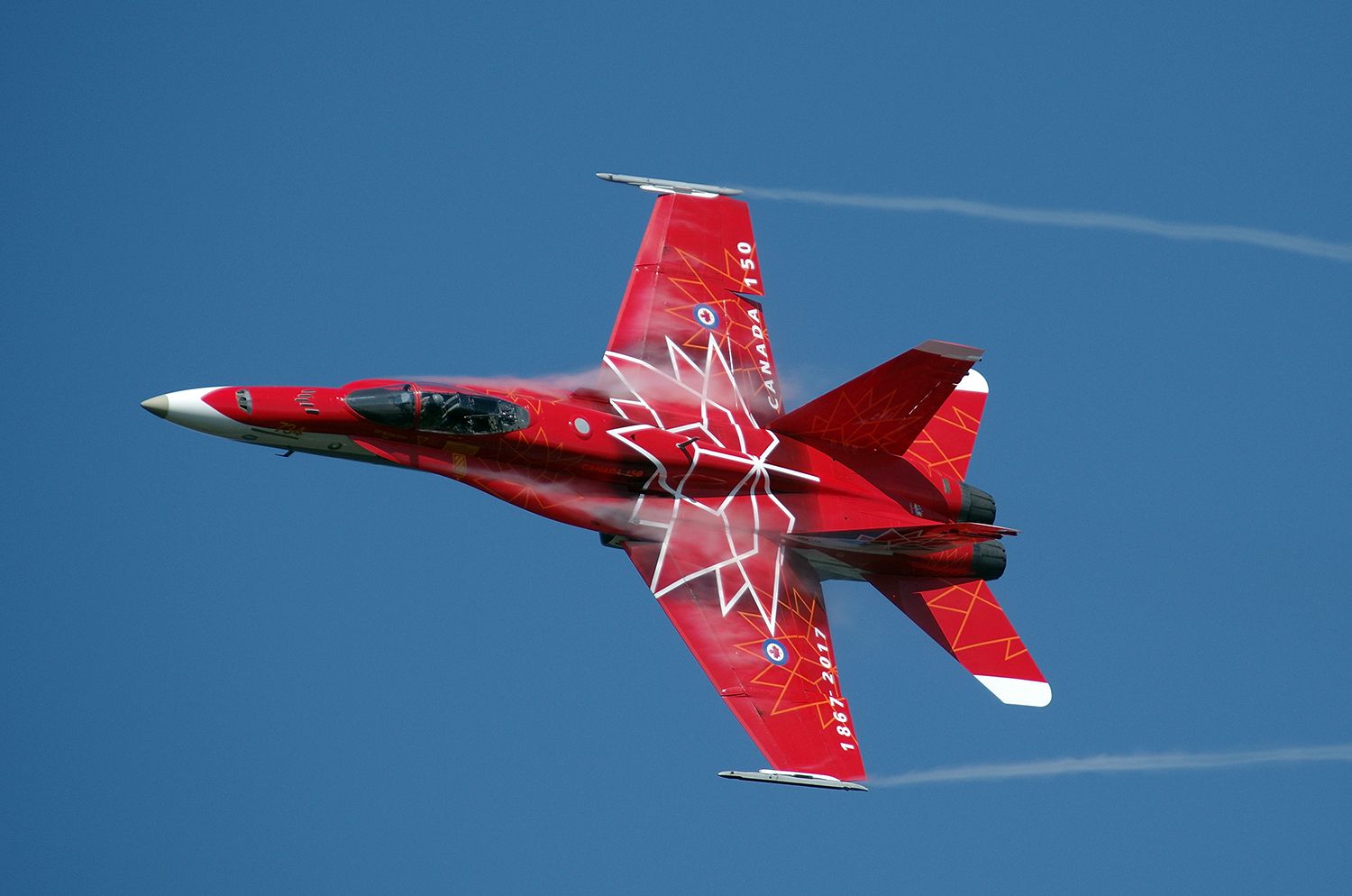Canadian CF-18 Hornet replacements, a decisive and potentially controversial deadline approaches
On October 18, the House of Commons (Canadian Congress/Parliament) will reconvene and must choose 2 finalists for the FFCP program to replace its CF-18 Hornet, among proposals from Lockheed Martin, Boeing and Saab.
According to the Canadian media Rabble, although there has been a relative consensus among the main political parties in the House of Commons on the need for the purchase of new fighter jets (a replacement that is 10 years overdue), this apparent harmony could fracture because each side has its favorite fighter, and will try to impose it.
Earlier this month, three industry insiders with knowledge of the competition between Lockheed Martin, Boeing and Saab for the $15 billion Future Fighter Capability Project (FFCP) contract were consulted. Two of them believe that the Saab Gripen will be withdrawn from the competition this fall, perhaps in a few weeks. And all three believe the final answer – the choice between the F-35 and the F/A-18 – will come in five months, probably in March 2022.
Fissures that could become fractures
As noted above, the choice of a CF-18 replacement is a decade behind schedule and the Royal Canadian Air Force (RCAF) has recently had to improvise a series of measures (modernization program and purchase of ex-Australian Hornets) to maintain a credible fighter capability while waiting for the FFCP program to materialize. The friction arises because there is no political consensus on the best candidate.

In July 2010, the Harper Conservatives announced that Canada would buy the F-35. Whether this is the Conservatives’ preference under Erin O’Toole is unknown, but they will certainly be poised to score points if Harper’s decision is vindicated.
In October 2015, the Trudeau Liberals clearly stated in their election platform, «We will not buy the F-35 stealth fighter.» If they now go for the F-35, they will have to counter the Conservative attack for this change of course and the 10+ years of delay.

If the Liberals go for the F/A-18 E/F Super Hornet, they will have to contend with the Canadian military, which has long been a supporter of the F-35.
And the New Democratic Party (NDP) wants to «ensure maximum industrial benefits and jobs» with the purchase, and what could be the leading contender on that score – Saab’s juicy Gripen for Canada proposal – could be withdrawn from the competition in a matter of weeks.

A decision in March in favor of the F-35 could also spark political turmoil, over the issue of large maintenance and flying hour costs, which cause so much discomfort to the USAF and in the UK. Although from Switzerland they argued otherwise.
The Royal Air Force (RAF) has already reduced the number of F-35s it planned to buy due to maintenance costs, while the United States Air Force (USAF) is negotiating intensively with Lockheed Martin to lower the cost per flight hour of its F-35A (the company has pledged to bring it down to US$30,000 by 2023).
If the Liberal government opts for the F-35, it could face similar pressure to reduce its planned purchase of 88 fighter jets to the Conservatives’ original purchase figure of 65 units. Again, uncertainty and potential for recrimination in the chamber.

While the u$s 15 billion purchase price (with an overall program cost of u$s 60.75 billion) has not raised too many eyebrows during earlier phases of the competition, that could change with the parliamentary budget holder’s report early next year and the signing of the contract.
There is also the view that the F-35 is less suited to Arctic defense (so it would not be the best choice for those who argue that the fighters are essential to prevent Russian and Chinese bombers from entering Canadian airspace), but is more geared to surface attack missions, questions could also start to be raised about the effectiveness of militarism, especially after what happened in Afghanistan.
In the opinion of Brent Patterson, author of the original article, these are some of the issues that will have to be addressed in Parliament from October 18.
Given that the current Trudeau government could go on to lose the next election in 2024 and that delivery of the first fighters is not expected until 2025, there are still many unknowns and difficult terrain for this purchase to cross the finish line.
Although the purchase of fighter jets was not a contentious issue in the past elections, it is likely that this relative political peace will be put to the test in the coming months, as the bidding process concludes and the government’s decision faces new scrutiny.
Because major armament programs always have political aspects that can be as or more defining than technical or economic arguments, to steer the decision one way or the other.




Comentarios
Para comentar, debés estar registrado
Por favor, iniciá sesión